#object biology
Text

Airy hfjone anatomy ด้านในของโคม
#ตะเกียง#hfjone#onehfj#object show community#hfjone airy#airy hfjone#i am bad at this okay#objectshow#object biology#object show#osc#objectshows
593 notes
·
View notes
Text
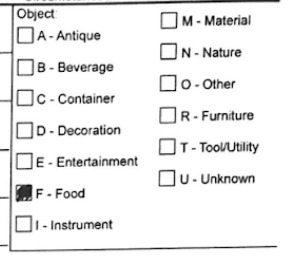
canon object classification!
#hfjone#hfjone charlotte#object biology#i am trying very hard to be normal about this development BUT IM ACTUALLY SO EXCITED OH GKD
157 notes
·
View notes
Text
keeping objects as pets #3: candles!
hi there! in this series, i’ll be going over basic descriptions of commonly-kept object species (and some rare ones too!), facts about them, why you might want one as a pet, their basic needs and necessities provided you want to house one, and things you should NEVER do. for the third of this series, we're covering candles!
description
candles are a very diverse breed of object that come in a ton of unique shapes and sizes. some are short and stocky while others are very tall! they usually are less than a foot tall, but they can be taller, in rare instances. their legs are plantigrade, with three fingers per hand and three toes per foot. their claws are non-retractable. their limbs, while softer underneath, are covered in hard and inflexible flame-resistant scales, similar to that of a pangolin or armadillo. they are able to light spontaneously, but this takes more energy than they typically have and they often must find a way to produce their flames on their own.. their wicks regrow over time if damaged and have no nerves. they produce wax through their whole life.
facts about candles
uniquely among objects, candles can sometimes produce a thin covering of a glasslike material to protect their wax bodies. object biologists aren't fully sure why this gene is inactive in some candles and active in others. their bodies, unlike real candlewax, are more soft and malleable and therefor more prone to damage, so it's agreed on that this "jar" formation is meant as a protective covering, though with it being so fragile, some specialists have suggested it to play a role in mate selection in the wild. their diet consists primarily of insects in the wild, but can be supplemented with crustaceans as well - they seem to have a taste for shellfish.
why as a pet?
candles aren't as skittish as lanterns, and can be quite bold at times. they aren't curious by nature like backpacks, though, preferring to stay in small groups in a remote location. this can make them ideal for people looking for an object that doesn't need company every single day, though this shouldn't be an excuse to neglect them! their melted wax can be collected and used as a regular candle as well, so for people who like to meditate, this can be a great way to save money, provided they can meet the needs of the creature. these animals are quiet and reserved, and very easily trained, which can make them ideal for people with children in their homes as well.
basic needs + do’s and dont’s
as previously stated, candles primarily consume insects. they favor grubs over adult insects, but their teeth are able to crack open the shells of most beetles, roaches etc. this can make them great for pest control in houses with lots of insects, but you should never rely on them for this! their primary need is that they absolutely MUST BE LIT now and then! candles produce wax through their whole lives and in the wild they will light themselves if possible (sometimes using tools to achieve this), but due to potential danger with fire indoors you absolutely HAVE to light them yourself to burn excess wax off. if the dripping wax is an issue, you can try waiting for it to harden again before scraping it off floors. alternatively you can try "dry-waxing", which is a relatively new practice for candle owners. this consists of using special waxing tools to remove built up wax from the object; care must be taken as removing too much can be extremely painful for the object and possibly even kill them. this is why i recommend taking your object to the vet to have them perform this instead to avoid harm to your pet. if your candle is hesitant to go in a carrier, you can try luring them with a raw shrimp, one of their favorite treats.
their primary sources of enrichment come from their environment, which is a great way to lead into:
housing
candles don't require a massive space, but these animals do require at least a medium size house to be fully comfortable. they like to have a visually stimulating space, with bright colors - if your home has more muted colors, i suggest setting up a "den" for your candle to keep them stimulated. as far as toys go, they actually aren't as overly playful as some species, but maybe have some cat toys such as feathers on poles for them or mice to throw around.
that’s all! hopefully this helps educate anyone who is considering this species!
#speculative biology#spec bio#spec evo#speculative evolution#object shows#osc#species info#object husbandry#object biology#hfjone#inanimate insanity
45 notes
·
View notes
Text
I recently read @objectbiologist entire blog cause man was it interesting and wanted to make fanart of Roland cause I love making art for things I enjoy

I couldn’t find a full body pic of them, so I hope this is accurate enough lol.
Man this blog just made me think about objects fairly differently and even come up with some of my own, uh, findings? I guess (like the fact that my candle character Chex likes to light their wick in the colder months to stay warm instead of bundling up) idk. It’s just really fun!
Hope you enjoy my art!
38 notes
·
View notes
Text

glass objects with see-though eyelids. consider it
52 notes
·
View notes
Text
hi! my name is unimportant, but yall can refer to me as OH / OBJECTHAZARD mod! (he/him.)
i am a certified Dangerous Object Specialist and keeper with a specialization in explosive objects! i made this blog to share facts and info about an often demonized type of objectkind! expect info posts, answering asks and silly photos of the objects I keep.
For information on what exactly constitutes a dangerous object, see here!
ooc)) this is an unreality blog, based off of accounts like @objecthusbandry and @objectbiologist ! go give them a follow!
blog canon can be found here!
18 notes
·
View notes
Text

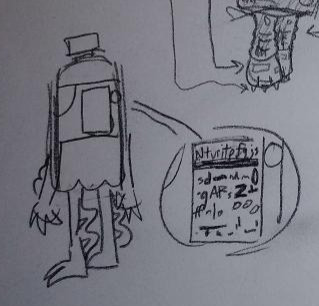





hey. heres some object bio stuff :)
#object show community#osc#object shows#object biology#object biology hcs#idk what else to tag this as lol#this is a highly specific type of idea i am simply obsessed w :)#some of these r ideas ive had for almost a yr btw im just elaborating bc i feel inspired abt object bio today!!!#ask to tag#sorry. this appeals to me and like maybe 10 people in the whole world but its extremely important to me and i never stop thinking abt it
25 notes
·
View notes
Text
HELLOOOO INTERNET :D
My name is Charlie! If you read my bio you should already know that! I love making friends and I would adore some asks, please feel free to send me some! I don't mind answering questions about my life, objects, or anything else you'd like to learn about! Can't wait to see you in my inbox.





//ooc: Hi! I'm @a-normal-osc-blog or @your-local-terror! I was inspired by my friends, @objecthusbandry and @objectbiologist to make this.. rp-ish blog? It's going to be objectbiologist's canon and will follow the same rules. If the link isn't working, the canon is as follows:
objects are as intelligent as humans are and have their own culture and society.
objects are around the size as humans are, with a wider range of heights that can make them taller or way shorter than the average. some objects possess the fullsize gene, which makes them around the same size as their inanimate counterparts
objects and humans live alongside each other.
Charlie is a year older than how I am rn irl, so please don't send anything weird. She is here to get a perspective on object society from an object's pov. Most if not all posts will be in character, thanks for reading!
9 notes
·
View notes
Photo

pretty simple, but a diagram for bug object development
#my art#spec bio#object biology#used tt here but she has her second set when she debuts in season 2#not pictured here since some bug objects don't have wings due to species#but she gains wings between season 2 and iii
48 notes
·
View notes
Note
how does ur tail work? :3 im v curious
ooh, I love speculative biology :D
Sorry for the late response! I've been working on this for a while and now I'm finally ready to show you all what I've got >:3
Okay so here's what I've got so far in terms of Leafy Tail Mechanics


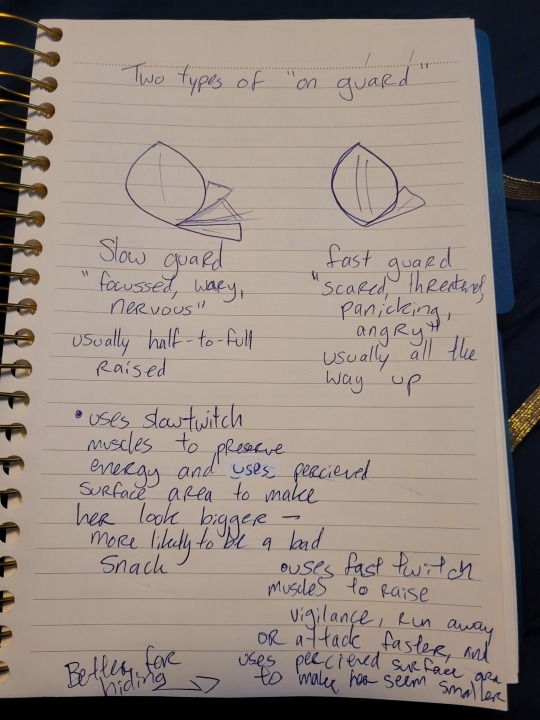
Let me know if you can't read it haha 😅 I'm so excited to be able to finally share this stuff (Fanny version coming soon? 👀 maybe even a full dive into both?👀👀👀)
#ask#ooc#mod response#speculative biology#spec bio#object biology#unreality#mod answers#leaf biology#osc spec bio#the ramblings of a madman (biology notes)
3 notes
·
View notes
Text
This is a blog dedicated to living objects. Wether you have a hoard of them (the correct name for a group), or just one, this blog is a place to send in asks about your objects.
5 notes
·
View notes
Text

biology of a stapler
#speculative biology#stapler#mine#my art#spent the whole day stapling objects and it gave me ideas#anatomy
36K notes
·
View notes
Text
many objects, when born, will have weak and underdeveloped limbs. as time goes on the limbs will gain enough strength to support the object and later secondary feathers such as feathers and scales will begin to grow/harden.
baby backpacks for instance are born with no fur on their arms and legs and closed eyes (similar to many mammals). for the first few months of life they will rely on their mothers for warmth and protection and spend most of this time in the pocket.
semi-aquatic objects are born in the water and rely on their guardian to ferry them around until they are strong enough to swim. they do not gain the ability to walk on land until they are 12 to 36 months old.
aquatic objects make their homes near or on the water or, in the case of urban or suburban families, have pools for this reason.
object limbs remain mostly the same size across an object's lifespan, so it's not uncommon to refer to young objecrs as "growing into their limbs". their limbs are very unwieldy at a young age, and child and teenage objects tend to be rather clumsy as they get used to being able to freely move. similar to how humans experience awkward puberty ages, teenage objects will also be very awkward in both appearance and behavior as they quite literally grow into themselves
101 notes
·
View notes
Text
keeping objects as pets #2: lanterns!
hi there! in this series, i’ll be going over basic descriptions of commonly-kept object species (and some rare ones too!), facts about them, why you might want one as a pet, their basic needs and necessities provided you want to house one, and things you should NEVER do. for the second sheet in this series, we'll be talking about lanterns!
description
lanterns are a personal favorite of mine! they come in many shapes and sizes, in many different colors, but there are a few things that remain the same in each individual. lanterns are typically classified by scientists as being under the object group Lucerna, which consists of many light-emanating objects, including things such as lightbulbs, lamps, and even chandeliers and candles, but to be specific, i'm covering "standard" lanterns here ('oil'-powered metal and glass lanterns).
the limbs of lanterns are covered in plating, not unlike an exoskeleton found in things such as beetles. this plating is mainly composed of similar material to the metal of the object itself. the color of the limbs can vary, but is typically the same color as the rest of the object, albeit darker in tone. they have three toes on each foot, four-fingered hands, and no pawpads. they have no claws on their feet, but each finger is tipped with small, metallic claws, evolved to pick off the shells of nuts and fruits when necessary.
the 'oil' found in lantern objects isn't really oil as we know it! it's a unique substance produced by specialized glands within the body, used to create flames. this substance is highly prized in the scientific community and is often extracted painfully from objects, which (obviously) is absolutely disgusting. if you suspect your lantern was subjected to this practice, CALL THE AUTHORITIES and be ready to give over the proper paperwork. this injustice cannot continue.
facts about lanterns
contrary to popular belief by laypersons, these objects are frugivores. they derive their energy by consuming fruits, seeds, nuts, grain, etc., only occasionally supplementing their diet with insects, though this is uncommon to observe, especially in domestic species. their highly-specialized bodies are a result of millions of years of evolution; they are nocturnal, and evolved bioluminescence through flame to accommodate this schedule, as their eyesight tends to be poorer than many other nocturnal species. they do not stay lit during the day, and in fact, many domestic lanterns don't light themselves at all, unless their owners are encouraging them in exchange for treats. no lantern species stay lit all the time. overlighting can indicate stress and overstimulation. interestingly, their natural habitats are typically cold, so producing this extra heat might serve more benefits than first thought by scientists!
due to their fragile glass segments, these creatures are extremely skittish in the wild, and only through selective breeding have they become companions to us humans. they are rarely-seen during the night, and nearly nonexistent during the day. if you see a lantern in the wild during the day, please report it to your local object specialists; this is not a normal behavior and can be indicative of brain injury or emotional trauma. these objects are very solitary and do not trust others, even their own kind, easily if at all.
why as a pet?
lanterns, as their name implies, are great companions for people who work outdoors during twilight or night. they can be trained to emit light at specific times or under command, which can make them extremely helpful during the night or in dark buildings. they can also be wonderful support objects if properly socialized, though this is less common. due to their ability to produce flame, they commonly feel warm to the touch, which can be comforting to their owners.
basic needs + do’s and dont’s
as a nocturnal species, it's best to only adopt a lantern if you are willing to adapt to their schedule. i cannot stress this enough, you should not expect an object to adapt to your schedule, you should do the opposite and adapt to theirs. never yell at a lantern, they are extremely sensitive to loud noises and this is nearly guaranteed to break their trust, especially if you haven't had one for long. they aren't a very curious species, and prefer to not be overwhelmed with a multitude of toys - just a few will suffice. they will have a clear favorite, which can be quite amusing to first-time lantern owners.
housing
lanterns are mostly content in homes of average or smaller size. they don't need as much space as many other species, and in fact can be overwhelmed with too much open space. they like cozy spaces!
that’s all! hopefully this helps educate anyone who is considering this species!
#speculative biology#spec bio#spec evo#speculative evolution#object shows#osc#lanterns#species info#object husbandry#object biology#hfjone#hfjone airy
29 notes
·
View notes
Text
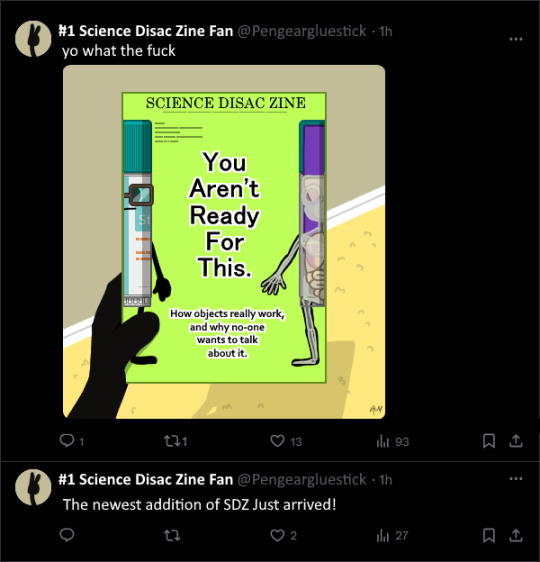
That's oomf 😭😭😭
#fake screenshot#velo art#object oc#object show oc#object shows#object show#anatomical gore#tagging jic#object biology
0 notes
Text
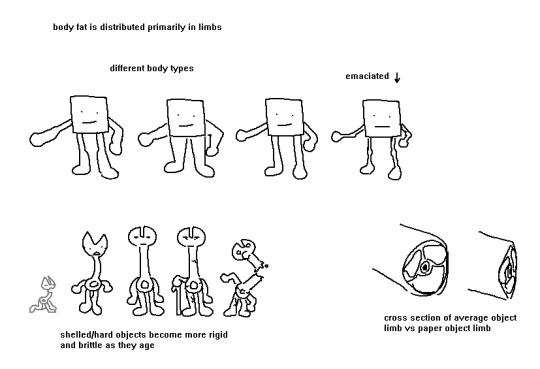
some quick object biology notes
#my art_#oos#object biology#mostly for my show oos but these could be applied to other shows#anatomical gore
29 notes
·
View notes